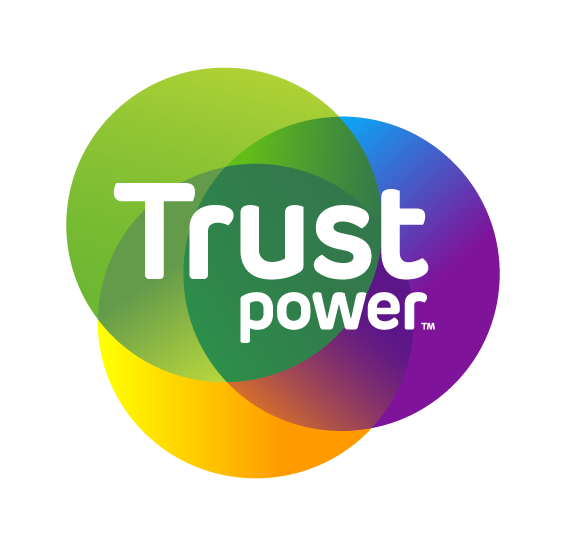

As we approach CHARGE Europe (17-18 October), we’ve been asking our top speakers and partners to reveal their approach to branding in energy. In this article, we speak to Carolyn Schofield, Head of Brand at Trustpower.
The interviewers are, Friðrik Larsen, Founder and Owner of CHARGE and Natalie Bacon, Content Director at CHARGE.
What was the background to Trustpower making the strategic decision to reposition from an energy retailer to a bundled energy and telecommunications provider?
Trustpower’s background, since the introduction of a competitive electricity market in New Zealand in the late 1980s, is as one of the country’s five major Gentailers. The retail energy market in New Zealand is highly competitive, with over 30 retailers in a country with less than 2 million households, so the Trustpower retail business has always looked for opportunities to differentiate from other energy retailers and achieve profitable growth.
Around 15 years ago Trustpower recognised that there were synergies between energy and telecommunications retail, and started offering home phone and broadband services. In the early days Trustpower’s telco services were provided by a third party and were retailed under a separate brand. Although the company had some success using this model, there were challenges. Firstly, as telco services were provided by another company Trustpower didn’t have complete control over the customer experience with mixed results. Secondly, the telco services were being offered as a ‘would you like fries with that?’ add-on, rather than part of the core offering.
Around 10 years ago Trustpower made the decision to change its approach. In 2011 the New Zealand Government announced the Ultra-Fast Broadband Initiative to bring fibre broadband to 75% of the country by 2019. This created a unique opportunity for smaller telcos to challenge the established duopoly, as the fibre roll out would create a prompt for the majority of households to review their broadband supplier. So Trustpower invested in building its own carrier grade ISP network.
At the same time the company made the strategic decision to move from offering energy and telco services separately, to ‘bundling’ them into convenient, easy to manage multi-service packages that meet customers’ needs. This was something very few companies around the world had implemented successfully at the time but we believed that it would be the way we could achieve profitable growth in a commodity sector. The strategy has been so successful for Trustpower that the company has not only achieved impressive commercial results but has also created a new category of bundled service providers in New Zealand, with multiple competitors from both the energy and telcos sectors now launching their own bundled offers. Despite increasing competition, Trustpower continues to lead the bundled services category.
What steps have you made to reposition Trustpower from a provincial energy retailer into the leading bundled service provider?
Everything we do at Trustpower is driven by insights. We carry out continuous research into customer wants, needs and perceptions of the brand, in order to ensure that Trustpower’s positioning is both distinct from the competition and is grounded in core customer needs. Our starting point was to fully understand customer needs in relation to their energy and telecommunications services, and the roles these service play in people’s lives, so that we could position the brand to directly address these needs and define the attributes the brand needed to represent.
To kick start Trustpower’s repositioning we implemented a complete rebrand. We retained Trustpower as the company name but developed a new visual identity and consumer facing messaging to reflect the bundle focussed positioning. We then relaunched the brand, focussing on the largest cities in New Zealand where we had low market share and so where there was the highest potential for customer gains. Using customer insights we identified segments who had the potential to be of highest value to the brand to target with activation activity.
Advertising has played a key role in building our brand. Most people know the quote “half my advertising spend is wasted; the trouble is, I don’t know which half” (which is attributed both to John Wannamaker and Lord Leverhulme). But this is far from the truth today. During the last 15 years or so our understanding of marketing, advertising and creative effectiveness has advanced rapidly, including application of neuroscience and behavioural science principles, and Trustpower has applied these learnings. We have invested heavily in mass market, emotional, story-telling brand building advertising to create salience and build positive memory structures around the brand, which we support with targeted activation advertising to generate immediate results.
What are the benefits and risks of a bundled service provider?
Bundling services has benefits both for Trustpower and for our customers. Bundled customers are more valuable to Trustpower than energy only customers and churn at a lower rate. The higher share of wallet Trustpower achieves through bundling allows us to position on high added-value, rather than low price. The result has been that we have been able to profitably grow market share over the last eight years without competing directly with multiple challenger brands who are positioning on price. This is a far more sustainable business model than that of price fighter brands.
An additional benefit is that having established the concept of bundling we can continue to evolve it, adding additional products and services that align with our current services and increase customer value further as appropriate. In addition to the high added-value offered by Trustpower, customers benefit from the convenience of only having one company to deal with for multiple household services. Many of our customers lead busy lives that continue to get busier, so service elements like having one customer service number for energy and telco, one bill to pay instead of several, one app through you which you can manage your account instead of several for different providers, all save our customers time and make their lives a little bit easier.
When we first launched the bundle strategy we underestimated the difference in service requirements for energy and telco. Telco customers have far higher service needs, particularly during onboarding and in their first 90 days as a customer. Also people are much more engaged with their broadband service than energy. If the power goes off people accept it as part of life. If the broadband goes off people react immediately, emotionally and vocally. We have needed to invest heavily and continually in customer service to ensure we can provide the level of day to day service and technical expertise customers expect. If a customer experiences a problem with one service that will affect their perception of the brand for all services, and if they churn for one service they may churn for all.
There was a risk that customers would not accept that a company with a long history as an electricity retailer and generator could be a credible telco, particularly as the telco market in New Zealand has historically been dominated by two major players. The fact that there is ‘power’ in our name reinforces the direct connection with energy. There are still segments we are working to convince, but the fact that we have gone from having 0% consideration as a telco to now being a credible competitor to the large players shows that it can be done.
What advice would you leave brand and marketing leaders going into 2023/24?
First of all, despite the economic conditions across the world, now is not the time to reduce your brand and marketing spend. There are multiple studies dating back to the Great Depression of the 1920s showing that the companies that maintain, or even increase, investment in their brand during challenging economic times are those that flourish as soon as conditions improve. Continuing to invest in long term brand-building even during times of recession places your brand in a much stronger position than your competitors who cut marketing budgets, giving you a head-start as conditions improve. Clearly there are a unique set of circumstances for energy retailers in Europe currently but even in these conditions it’s the brands that stand firm and maintain a strong brand presence that will perform best as the situation improves.
Secondly, keep your customers at the heart of everything you do. Invest in the right research to understand your customer needs, and stay aware of how customer needs may be changing. Now’s a good time to review your brand’s positioning and your messaging to ensure it remains relevant to customers and distinct from your competitors. Customer insights may also reveal newly emerging customer needs and wants which brands can work to address even in challenging economic circumstances.
Finally, in difficult economic circumstances it’s easy to lose sight of long term objectives and focus entirely on the immediate future. Short-termism however is an issue in marketing across sectors with companies focussing on results and ROI over shorter and shorter time scales. However best practice shows that the best long term results are achieved by balancing long term brand building with short term campaigns, so keep applying effectiveness principles – even if this requires some challenging conversations with your CFO!

